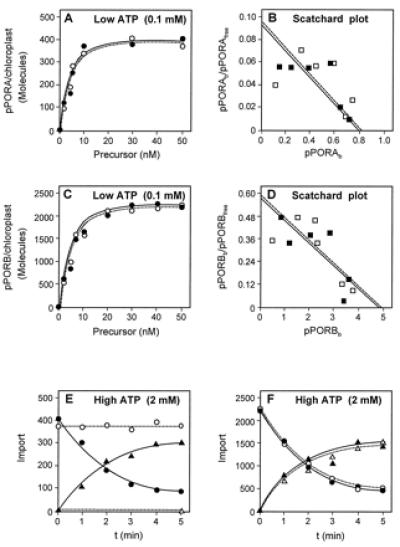Figure 1.

Quantitative receptor binding studies reveal different numbers of receptor sites for the pPORA and pPORB on the outer envelope of barley chloroplasts. (A and C) Binding of pPORA (A) and pPORB (C) to chloroplasts containing (solid lines) or lacking (dashed lines) Pchlide produced by 5-ALA pretreatment. The incubations were performed at 4°C in the dark in the presence of 0.1 mM Mg-ATP. (B and D) Scatchard analysis of the binding data shown in A and C, respectively, to determine the numbers of receptor sites for the pPORA and pPORB per plastid, as well as the KD values of their binding to barley chloroplasts containing (solid lines) or lacking (dashed lines) the exogenous 5-ALA-derived Pchlide. (E and F) Translocation competence of the envelope-bound pPORA (E) and pPORB (F) determined at 23°C after readdition of Mg-ATP to a 2 mM final assay concentration. The different graphs show time courses of precursor (circles) and mature protein (triangles) levels with chloroplasts containing (solid lines) or lacking (dashed lines) Pchlide produced by 5-ALA pretreatment. Note that pPORA is imported only into Pchlide-containing chloroplasts.
